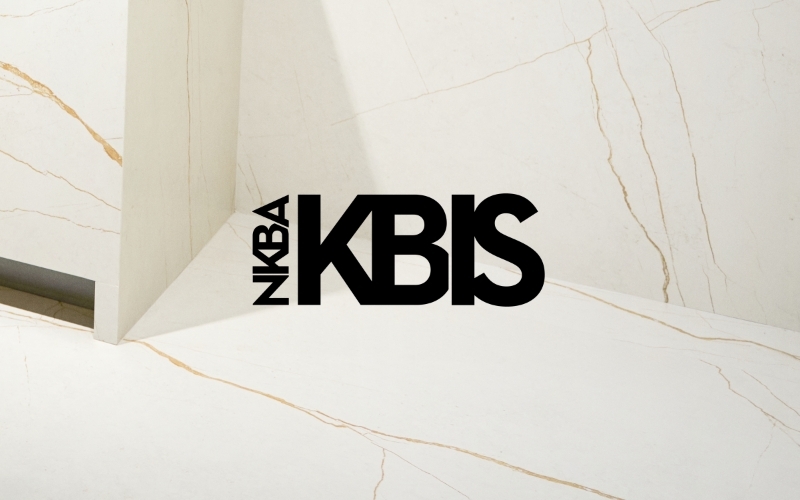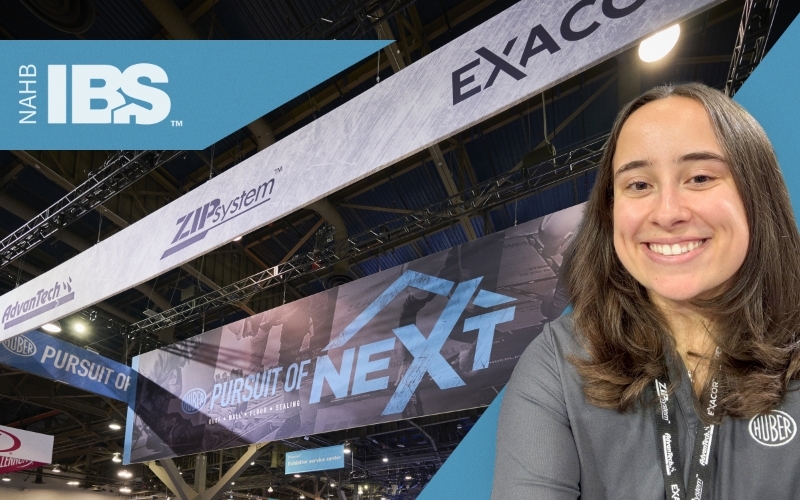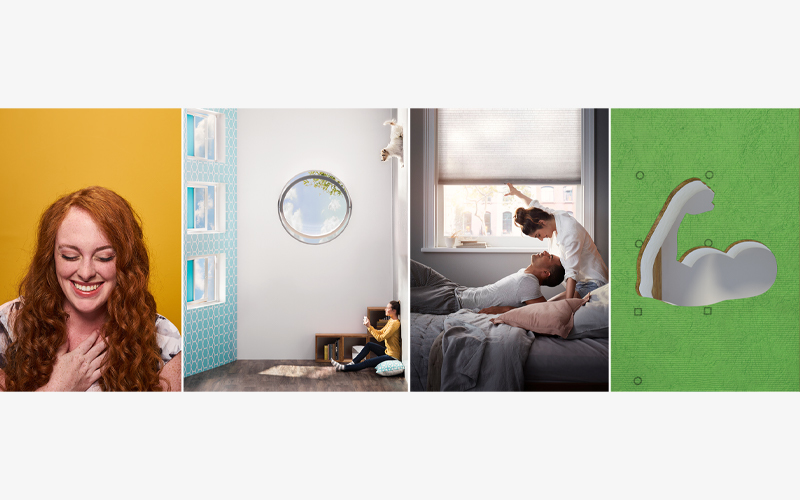Client News
Cascading from the ceiling of New York’s celebrated Whitney Museum on Madison Avenue was a massive wave of pigmented fiber. A site-specific work, titled Pillar of Inquiry/Supple Column was the newest large-scale sculpture by American artist Sheila Hicks. As one of the 103 artists chosen to exhibit at the 77th Whitney Biennale* (March 7-May 25, 2014) Hicks created Pillar of Inquiry/Supple Column using significant quantities of brightly colored Sunbrella® material supplied by Glen Raven Custom Fabrics.
Sunbrella: The Raw Material
The original, tactile Sunbrella fiber was Hicks’ choice because of its beauty and durability. Glen Raven Custom Fabrics, which has been manufacturing elegant, sturdy materials since 1961, prides itself on the successful production of high quality, performance fabrics for the awning, marine and upholstery markets. Temperature and weather resistant, Sunbrella fabrics have long been used for various applications for their durability and aesthetic appeal and in the design world for their malleability.
Pillar of Inquiry/Supple Column: The Whitney Museum (New York)
Hicks encourages interaction with her art works. Her environmental installations blur the line between indoor and outdoor and between interior and exterior.
Pillar of Inquiry/Supple Column, an 18-foot high installation that tumbled and descended directly from the Whitney Museum’s grated ceiling to the floor (the building, designed by architect Marcel Breuer, will soon to be taken over by the Metropolitan Museum of Modern Art), was designed by Hicks to awaken viewers’ appreciation and understanding of the architecture by which it is surrounded.
“I want people to look at it and let their imagination soar”, Hicks said. “I know that the museum guards and curators frown on touching the art, but this work can really stand up to any test.”
A “living painting or a calligraphic sculpture,” the work’s lively clusters of intermingled lines invite participation and reinforce the natural cohabitation of art, architecture and the humans who frequent them.
Guest Curator Michelle Grabner chose Hicks and featured her work as part of the fourth-floor exhibit.
“I developed a curriculum that presents identifiable themes that are currently established in the textures of contemporary aesthetic, political, and economic realities,” Grabner said. “Within this curriculum, contours can be drawn around three overlapping priorities: contemporary abstract painting by women; materiality and affect theory; and art as strategy—in other words, conceptual practices oriented toward criticality. Theoretically, the works that I included will each demand from the viewer a varied network of analysis.”
*The 2014 Whitney Biennial was orchestrated by three curators from outside the Museum—Stuart Comer (Chief Curator of Media and Performance Art at MoMA New York), Anthony Elms (Associate Curator at the Institute of Contemporary Art, Philadelphia), and Michelle Grabner (artist and Professor at the School of the Art Institute, Chicago).
Baoli: The Palais de Tokyo, Museum of Modern Art (Paris)
Baoli is the title of the site work created by Sheila Hicks in the forum of the Palais de Tokyo Museum of Modern Art in Paris. It was inaugurated on April 24th and will remain in place for approximately twelve months. The curator, Gallien Dejean, has encouraged Hicks to reconfigure the entire Grande Rotonde entrance space, permitting her the freedom to work with texture and fiber - synthetic or natural – and create a space that is a three-dimensional, organic and abstract.
Baoli, also known as Stepwells, is a set of steps traditionally leading down to important water deposits. They may be covered and protected and are often of architectural significance. Magical meeting places, they are most common in western India.
Gallien Déjean, curator of the Palais de Tokyo, Museum of Modern Art, Paris, April 2014 describes Hicks’ work as inclusive of the visitor and the architecture around it:
“In Sheila Hicks’ work, weaving is a practice that intertwines intention, intuition and the relationship to the space in which it is exhibited. Hicks reconfigures the Grande Rotonde at the heart of the Palais de Tokyo, which she sees from a perspective which is simultaneously architectural, pictorial and sculptural. In this space, a well-known place for meeting and exchanges, the artist plays with the effects of material, texture and fiber, both synthetic and natural, and perceives her environment as an organic abstraction in three dimensions.
In her work, the sensuality of these materials always co-exists with ethnographic elements. In this perspective, the Palais de Tokyo installation is as evocative of terraced agrarian landscapes in Indian culture as it is of Baoli. These surprising, stepped architectural forms - veritable inversed temples – are places where daily rituals are carried out as well as important aquatic sources. In inviting spectators to visit the colored levels of her Baoli, Sheila Hicks sees this project not only as a work of art but also as a scenic installation intended to welcome a program of events and a place of observation oriented towards the throughways of the Palais de Tokyo.
Since the 1960s, Sheila Hicks (born in Hastings, Nebraska in 1934) has woven work that balances between sculpture and fine art. A student of Josef Albers when she was at Yale University, she studied painting and wrote her thesis on pre-Columbian textiles. In 1964 she moved to Paris to open her studio. Hicks sees her work as nourished by her travels through different cultures - which she has studied as a process as well as a result - creating art that draws the visitor into the work and into the architecture it inhabits.”
The Artist
Sheila Hicks trained as a painter at the Yale School of Art when Josef Albers was director. She began working with what she calls “supple materials” in the 1950s. With over 140 solo exhibitions to her credit, Hicks’ works are in the collections of major museums around the world from Amsterdam to Philadephia to Paris to Tokyo. Sheila Hicks lives and works in the historical Cour de Rohan in Paris. She is represented by Sikkema Jenkins & Co., New York. She has been the subject of four books, including:
- Sheila Hicks Weaving as Metaphor by Nina Stritzler-Levine, Arthur Danto, and Joan Simon, published by the Bard Graduate Center for Studies in the Decorative Arts, Design, and Culture with Yale University Press, 2006, ISBN 978-0-300-11685-4
- Sheila Hicks-Fifty Years by Susan C. Faxon, Joan Simon, and Whitney Chadwick. Published by Addison Gallery of American Art with Yale University Press, 2011, ISBN 978-0-300-12164-3
- Sheila Hicks by Monique Lévi-Strauss, published by Pierre Horay, Suzy Langlois, 1973, ISBN 2-7058-0009-3
- One Work –Sheila Hicks at the Mint by Annie Carlano, Published by the Mint Museum, Charlotte, North Carolina, 2012, ISBN 078-0-300-19085-4
To see the installations Hicks created with Sunbrella® fibers, please visit:
Baoli: Palais de Tokyo, Museum of Modern Art, (April 24, 2014 - March 28, 2015) Paris
Vivaci Vivaci a permanent installation in the Massimo and Leila Vignelli designed SD26, restaurant on Madison Square Park in Manhattan
# # #
About Sunbrella Fabrics
Introduced in 1961, Sunbrella revolutionized the way the world thinks about how beautiful fabrics look, feel and perform. The Sunbrella brand is the leading premium fabric choice for awning, marine and furniture manufacturers, offering legendary durability, fade resistance and ease of cleaning.
Upholstery fabrics from Sunbrella are continually advancing in design sophistication and comfort, resulting in applications both outside and inside the home for coordinated décor. Sunbrella fabrics have been certified by GreenGuard, an international standard, for contributing to indoor air quality.
Sunbrella fabrics are manufactured and marketed by Glen Raven, a 132-year-old family-owned company based in North Carolina with operations worldwide. For more information on the Sunbrella brand, including fabric resources, visit www.sunbrella.com.


